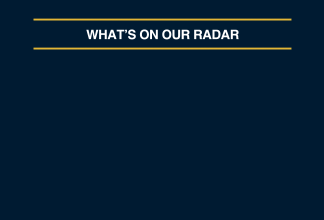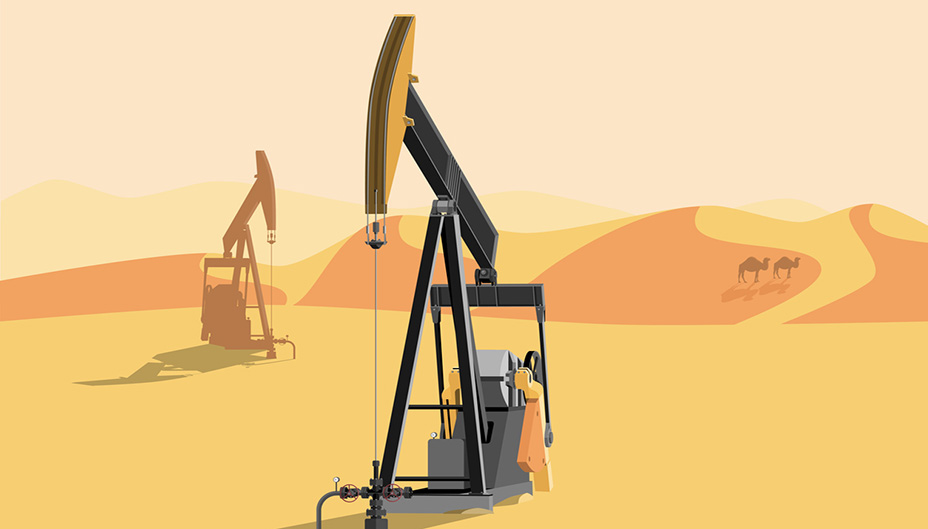Everything You Need to Know About Oil's Recent Price Spike
Written by The Content Team
Published on September 18, 2019
minute read
Share:
The recent attack on Saudi Arabia's oil infrastructure forced the country to shutter around half of its overall oil production, sending oil prices soaring on fears of global supply shortages.
The outage accounts for about five per cent of the world's oil supply and came after air attacks on key Saudi Arabian oil refineries. It pushed oil prices to post their largest one-day percentage gain in nearly 30 years on Monday (Sept. 16).
In this week's MacroMemo, Eric Lascelles, Chief Economist at RBC Global Asset Management (GAM), offered a number of key insights in the wake of the Saudi Arabian disruption. Here are some highlights:
- One thing is clear: the timing is tricky. Global oil inventory levels were already lean. The global economy was already drooping. And Saudi's state-owned oil champion is set to go public in the not-too-distant future.
- Oil prices spiked (on Monday), up by nearly 15% on the day to US$69 for Brent and US$63 for WTI. This is the largest single day percentage increase since Iraq invaded Kuwait in 1990.
- Saudi Arabia has lost more than 5 million barrels/day of production capacity. That represents more than 40% of the country's production and around 5% of the global supply of oil.
- If a 5% hit to the global oil supply sounds trivial, it is important to appreciate that the elasticity of supply and demand are both extremely low in the oil sector. In other words, it is hard to persuade people to use less oil on short notice. It is equally hard to increase supply elsewhere without advance warning. As a result, large price movements can result from relatively small supply-demand imbalances.
- Case in point is the global oil shock of 2014—2016, which saw oil prices fall by roughly 75% in response to a mere 2% surplus of oil supply over demand. To be fair, this doesn't mean that oil prices must rise by 188% now as this supply outage is thought to be temporary, meaning that the supply may be able to adjust more quickly than in past. Furthermore, Saudi Arabia has 188 million barrels of spare capacity spread around the world, meaning that it could theoretically fill a 5 million barrel hole in the oil market for 37 days, by which time presumably some fraction of the country's disabled oil production will be back online.
- Other OPEC nations have so far indicated that they do not plan to act as a counterbalance by increasing their own oil production, though the potential exists. For the moment, we assume they do not alter their production. OPEC recognizes it is not in their best interests for high oil prices to persist for a lengthy period as that encourages additional production from U.S. shale producers and motivates consumers to pivot toward more energy-efficient products. But they are likely more than happy to harvest increased profits over the short run until Saudi Arabia is up and running again.
- The attacks have hit both the Abqaiq oil processing facility – responsible for 7 million barrels per day of output – and also the Khurais oilfield which has a production capacity of 1.5 million barrels per day.
- Some fraction of the supply outage is thought to be of a precautionary nature and thus capable of recovering fairly quickly. However, real damage has been done to the infrastructure. Initial estimates that these could take a few weeks to repair have now stretched into months.
- From a geopolitical perspective, while this event was not precisely anticipated, we have been flagging for some time that geopolitical risks are presently higher than usual – with the U.S.-Iran relationship sharing centre stage alongside U.S.-China trade negotiations and the Brexit saga in the U.K. Iran is already alleged to have downed several U.S. drones, disrupted Iraqi pipelines and interfered with the flow of oil tankers through the Strait of Hormuz. Despite all of this, we believe the worst-case scenario of an outright war between the U.S. and Iran is still unlikely. While the recent attack increases the risk of retaliation, note that President Trump recently expressed a desire to recommence negotiations with Iran. And, Iran-hawk Bolton recently departed from the White House.
- In a world of elevated geopolitical risks in the Middle East, a larger than normal risk premium is arguably justified on the price of oil, even after Saudi production has been restored. It is not easy to defend the Middle East's sprawling energy infrastructure from drone attacks.
- From an economic standpoint, higher oil prices are usually a negative for global economic growth, though not all models concur with that interpretation. It is a murky subject. This is in large part because the world in aggregate is, by definition, neither an oil importer nor an oil exporter.
- Oil producers such as OPEC nations naturally benefit from higher oil prices. Canadian growth theoretically benefits by around 0.15% for every year that oil prices remain 15% higher than before.
- The U.S. economy is still a net energy importer and used to suffer badly when oil prices rose, but its nimble and expanding oil sector has now largely neutralized that effect. Of course, there are still sector-level implications, perhaps most importantly that consumers dislike rising prices at the pump. This is a particularly critical observation at a time when the consumer is acting as a key bulwark against recession risks.
- Other net oil importers such as the Eurozone and Japan will slow modestly in response to higher oil prices.
- Should the oil price increase be sustained, headline Consumer Price Index (CPI) prints in the developed world would rise by as much as 0.75ppt. This would take the U.S. metric from modestly below target to modestly above.
- That said, for all of this feverish analysis, it is important to keep the matter in perspective. A 15% oil price increase is certainly a rare event for a single day, but oil markets regularly gyrate by more than that over the span of months and years. As an illustration, between December 2018 and April 2019 the price of oil rose by roughly 40% and the world didn't end.
RBC Direct Investing Inc., RBC Dominion Securities Inc., RBC Global Asset Management Inc. and Royal Bank of Canada are separate corporate entities which are affiliated. RBC Direct Investing Inc. is a wholly owned subsidiary of Royal Bank of Canada. RBC Direct Investing Inc. and RBC Dominion Securities Inc. are Members of the Investment Industry Regulatory Organization of Canada and the Canadian Investor Protection Fund. Royal Bank of Canada and certain of its issuers are related to RBC Direct Investing Inc. RBC Direct Investing Inc. does not provide investment advice or recommendations regarding the purchase or sale of any securities. Investors are responsible for their own investment decisions. RBC Direct Investing is a business name used by RBC Direct Investing Inc. ® / ™ Trademark(s) of Royal Bank of Canada. RBC and Royal Bank are registered trademarks of Royal Bank of Canada. Used under license. © Royal Bank of Canada 2019. All rights reserved.
The views and opinions expressed in this publication are for your general interest and do not necessarily reflect the views and opinions of RBC Direct Investing. Furthermore, the products, services and securities referred to in this publication are only available in Canada and other jurisdictions where they may be legally offered for sale. If you are not currently resident of Canada, you should not access the information available on the RBC Direct Investing website.
Explore More

Here’s What Every Canadian Should Know About Estate Planning
Insights from Leanne Kaufman to help you feel more confident as you plan
minute read

3 Things We're Watching This Week
What the Inspired Investor team is watching
minute read

What’s Driving the Recent Surge in Gold Prices
Here are some things to watch with the gold market
minute read
Inspired Investor brings you personal stories, timely information and expert insights to empower your investment decisions. Visit About Us to find out more.







